Your Cart is Empty

A long, long time ago, big reptiles called dinosaurs lived together. This was way back, during the Mesozoic era which has three distinct time periods which are the Triassic period, the Jurassic period, and the Cretaceous period.
Just like nowadays, there was a fond chain with on one side carnivores and on the other, herbivores. These dinosaurs could be marine dinosaurs,terrestrial dinosaurs, or flying dinosaurs. Every one of them had their own ways to move.
Flying dinosaurs had without doubts the easiest time finding food but also to protect themselves against their main predators.
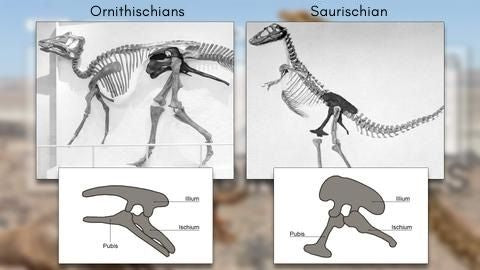
It is all about pertinence. There were two main dinosaur types which have lived on Earth during the Mesozoic era. There were Ornithischians and Saurischians? But what was differencing them apart?
These dinosaurs had for main anatomical characteristic to have a bird’s pelvis. Indeed, like birds now, their pubis was facing backwards in parallel to the ischium.
This dinosaur type essentially regrouped herbivores which were present in important numbers on the terrestrial globe.
These dinosaurs had what we call a lizard’s pelvis. The pubic bone of saurischians is facing forward. This characteristic is present nowadays in reptiles.
Saurischians included every carnivorous dinosaur species but also a certain number of herbivorous dinosaurs. Most of them went extinct between the Cretaceous and the Tertiary period, leaving then birds (or flying dinosaurs). Flying reptiles included the pterosaur clade.
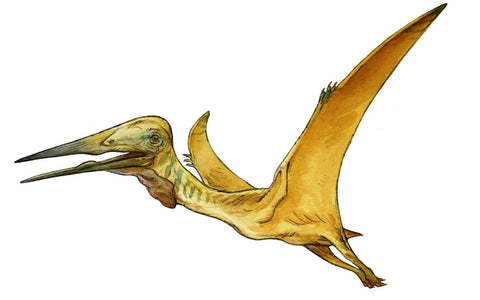
In contrary to what we see in documentaries or papers, pterosaurs were not flying dinosaurs! This explains the differences between the two categories.
So, it is essential to know their main characteristics, so we can tell them apart.

It is essentially the difference in their pelvis that allows us to distinguish dinosaurs from pterosaurs.
The first characteristic of pterosaurs is their wings. They were membranous expansions which linked the posterior extremities with the fourth finger. Bird and dinosaur’s wings correspond to modified anterior extremities, which means they are bone.
The second characteristic is the extremities. Pterosaurs had extended extremities to two body parts. Dinosaurs had extremities located under their bodies to support their weight and to be able to maintain a rigid posture when they were standing up or on all four.
Several flying reptile species lived on Earth or at least in the air during the Mesozoic era. Flying dinosaurs included and still include today (birds) carnivorous dinosaurs as well as herbivorous or omnivorous dinosaurs.
Now that you know the characteristics, that, with time, gave birth to birds, let’s see several flying dinosaur types aka early birds:

They are surely the transitory specie the most representative between non-flying dinosaurs and birds that we know today. Archaeopteryx had feathers and did not exceed half a meter of length. It had long wings and lived during the superior Jurassic period, 250 million years ago.
Several scientific researches allowed us to suppose that it could only hover to move and could also climb on trees.
Among flying dinosaurs that lived during the Mesozoic era, there was some with diverse sizes:

This flying dinosaur lived during the Cretaceous period, 125 million years ago. Its height did not exceed more than 15 centimeters. Its paws were graspable, it had coracoid bones and a pygostyle. This specimen’s fossil was found in Spain.
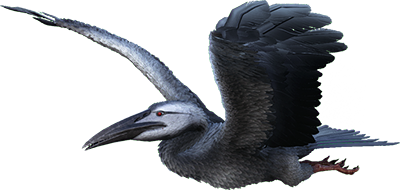
Without down, it was one of the first birds with teeth on its jaws. Charles Darwin, a naturalist, had also considered this specimen as a real proof on his work on the evolution theory.
Ichthyornis was a flying dinosaur that lived 90 million years ago. Its wing span was around 43 centimeters. Its appearance was very close to seagulls today.
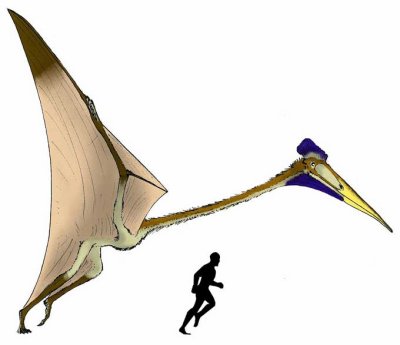
This impressive dinosaur essentially lived during the Cretaceous period and was part of the category we call pterosaur pterodactyl reptiles. This pterosaur that looked like a feathered snake measured 11 meters long and 6 meters on the ground. It weighted between 70 to 200 kilograms according to the specie and belonged to the Azhdarchidae family.
During the Cretaceous period, multiple species of flying dinosaurs of large spans existed. Quetzalcoatlus could have lived in Texas and the surrounding regions since it is where fossilized bones have been found.
Big fish and crustaceous amateur, it found itself close to swamps and scavenged dead bodies in its perimeter. Quetzalcoatlus knew perfectly how to adapt to every situation to survive.
Fossils have the impressive Hatzegopteryx thambema have been found in Romania. This flying reptile was 13 meters long for a span of 1é meters during flights. This reptile weight around a hundred kilos.
Finally, the flying dinosaur Ornithocheirus (still called Tropeognathus) had the same food regiment than Quetzalcoatlus. It could be piscivorous and scavenge food. Its span was between 6 to 12 meters and it weighed around 100 kilos.
After these impressive examples of specimens, let’s talk about smaller flying dinosaurs living during the Mesozoic era. This was the case of Rhamphorynchus which had a wingspan of nearly two meters.
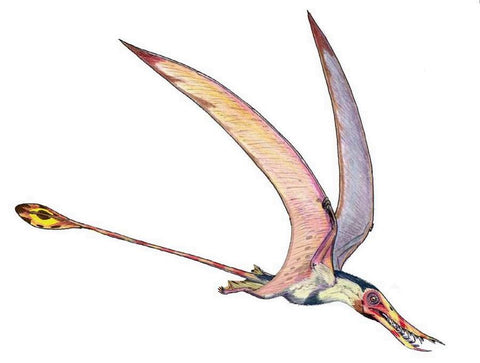
Its name literally means beak-jaw. Its snout ended with a beak and had no teeth on the apex (which connects the shoulders to the thorax), caudal vertebrae formed the bird’s tail or pygostyle and its graspable paws.
Dinosaurs that possessed these characteristics were arboreal and had a strong wing stroke which allowed them to fly and were considered as the strongest dinosaurs.
Pterosaurs constitute an extinct clade of flying reptiles. They existed from the superior Triassic period to the end of the Cretaceous period. Pterosaurs are not dinosaurs nor birds. They were diapsid ornithodiran archosaurs, to be exact. Most pterosaurs had a crate on their head which acted a sexual attribute.

Pterosaurs had the particularity to have an orbital fenestra or a hole in front of their eye. The parietal foramen was also reduced. If we observe their fifth finger, we can notice that its quite small. Pterosaurs were from a phylogenic standpoint, a clade from the animal kingdom, of the Chordate branch and the vertebrae sub-branch. They were part of the super clade of Tetrapod, from the Sauropsid class and the Diapsid sub-class.
Their infra-class was the Archosauromorpha, thier first clade was Archosaurs, their second was Avemetatarsalia, and their third was Ornithocheirus. There were subclades major types of pterosaurs which were pterodactyloid dinosaurs and rhamphoehynchoid dinosaurs. Pterodactyl dinosaurs were entirely or partially missing a tail. Their skull was impressive like exemplified Pterodactylus and Quetzalcoatlus. Rhamphorhynchoid dinosaurs were more archaic than pterodactyloid dinosaurs.
They each had a tail to maintain their stability. They also had a smaller skull like Rhamphorhynchus or Dimorphon. Studies were also don on the composition of their coats, which was made of hair-like filaments known as pychnofibers and had for pterosaurs an endothermic function. This means their organism could maintain a favorable constant metabolic temperature. Pterosaurs were oviparous as well as quadrupedal.
Their food regiment could be filterers, piscivorous, insectivorous, and they also ate crustaceans. Their skeleton showed many unique particularities. Their anatomy was perfectly adapted to flying. They had a pneumatized skeleton, like the one, birds have today. This anatomy trait allowed them to contain air essential for breathing. Their shallow and thin bones had a beehive structure and assured lightness and solidity.

The subclade of Pterodactylus was much alike. Their skeleton was more equipped for bipedal walking. Pterosaurs had seven to nine cervical vertebrae. And total of 10 to 18 vertebrae with sacred vertebrae.
In the pterodactyloid subclade, there was what we called a notarium, corresponding to the fusion of the third and seventh vertebrae. This structure allowed pterosaurs to make their spine stronger. So, when they fly, the torsion movements with the wing stroke were better supported by the animal. Pterosaurs also had dermic bone plates (gastralia). Their abdominal cavity was short and surrounded by six or eight ribs. They are also half six to seven very thin sternal ribs. Their collarbones were inexistent or merged with the sternum. The scapula’s anatomy was very particular as well as the coracoid bone’s anatomy.
The skeleton’s rigidity was also explained by the merging of two parts called scapulocoracoid. Another specific characteristic of pterosaurs was the extra bones on their forearm called the pteroid bone. Its function was to put in tension the animal’s patagium. Pterosaurs were the only one to have a prepubic bone which is forward the animal’s pubis.
In flying reptiles, the scapular belt organization is very sophisticated. We can count 2 to ten sacred vertebrae which during the evolution merged with the illio bones. Studies have been made on the first Rhamphorhynchoids are very successful. Their structure was a lot more rigid and welded than pterodactyloid dinosaurs or Rhamphorhynchoidea.
In the pterosaur group, their skull’s structure was similar, they had a big skull which could be longer than their entire body (neck included). Moreover, when we observed more closely their skull, specialists have observed evolution of their anterior body part, precisely on their superior maxillary bones, premaxillary bones and their forehead. Their fenestrae were not closed, and their eye’s orbits were bigger. They did not have sclerotic rings and their stereoscopic vision allowed them to see terrains in their environment.
Suppositions have been made on their olfactive conducts. They could have pass through the preorbital fenestra or by a hole at the background of their mouth. Pterodactyloid dinosaurs had the particularity to own a cartilaginous crest which could have been of diverse shapes. This subclade of pterosaurs had during the evolution, lost their teeth to end completely toothless (a notable characteristics especially of giant pterodactyloid dinosaurs).
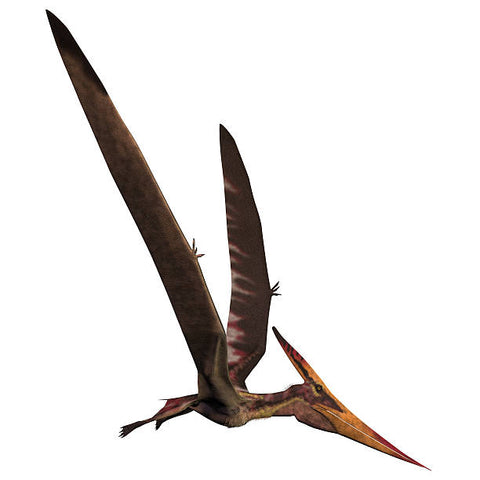
During the Mesozoic era, many pterosaur species existed from the smallest to the largest specie. They had their own ways to take off and fly in the air. Specialists think that bigger pterosaurs simply hovered (passive flight) and smaller dinosaurs flying thanks to wing strokes (active flight). They were all capable of stroking their wings. They needed a lot of energy to ride about.
A scientific hypothesis is that these flying reptiles had a homeothermic metabolism. Their coats certainly had a purpose to maintain their organism’s warmth. Pterosaur’s wings were without a patagium, which is what bats have. Their membrane was formed along the front bones of the animal.
During this time, there were different types of pterosaurs like Pterodactyls. This were carnivorous and fed on small animals.
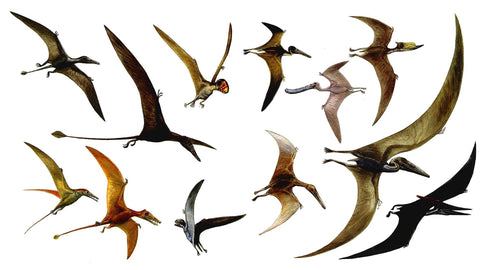
Dinosaurs started to fly very slowly. Many years ago, these gigantic animals developed the ability to fly. You must know that, on a biological standpoint, every trait of an individual, animal or vegetal appeared in the course of time thanks to a progressive or brutal evolution of the organism (like genetic mutations by example) or of the environment.
The nature is made that way, if a climate change comes and last for a very long period (like several thousands of years for example), mutations within an individual’s genome can happen.
Dinosaurs could have acquired during their evolution several traits and characteristics like being able to take off in the air or fly. Firstly, they would have developed 230 million years ago in the theropod subclade an anatomy with three functional fingers on their hands. Their bones would also have become hallow in the course of time and most of their bones became lighter.
Secondly, they would have acquired what we called a swivel wrist. This half-moon shaped bone allowed them to hunt their preys with an arm stroke like velociraptors did. Finally, there were other changes like the appearance of feathers on their entire bodies and other changes (long arms, switch of the first toe, short tail or a reduced number of vertebrae).
Every one of these characteristics could make these species stroke their wings a little or hover. But then coracoid bones appeared. These linked the shoulders to the thorax. The caudal vertebrae also merged with the ribs to from the tail, the pygostyle and graspable pas.
Pterosaurs had arboreal characteristics like a powerful wing strokes which allowed them to fly. Then, over the years, a bone from the result of atrophied fingers (alula bones) merging appeared. More than a simple anatomic modification, the alula bone allowed pterosaurs to better maneuver their flight. Finally, a tail, a back and a short sternum appeared which also gave these giant reptiles the ability to fly like birds nowadays.
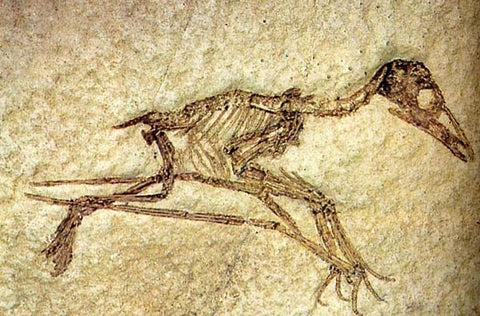
These law few years, some pterosaur fossil’s discoveries have been made in certain countries. Even with the delicacy and fragility of pterosaurs bones, some have been found intact for the happiness of the scientific community.
The study of fossils thirty years ago in Canada lead scientists to identify et classify a new pterosaur special unknow before, which they name Cryodrakon boreas.
This flying reptile had a span of 10 meters and was considered as one of the biggest flying being on Earth.
This new pterosaur specimen got a lot of recognition from the international scientific community. An entire fossilized skeleton has been found in the Middle East and was dug out in Lebanon, in the caza of Jbeil.
This specimen had around 112 teeth which were pointy and shaped like fangs. It was Caelestiventus hanseni that was found in a surprising well-conserved state. It had a long thin skull of 18 cm and its jaw was enormous with lots of teeth. It probably had a goiter.
Nowadays, numerous scientists (paleontologists, botanists, naturalists, geneticists, etc.) are always searching for new pterosaur evidence. Like we talked about, pterosaur bones are very fragile (as they are hollow and thin).
So, fossils are rarely found in a great state of conservation! Discoveries to come could allow us to know more about how they protected themselves from predators and if they only hovered for example. It would be interesting to discover the missing pieces to better understand the evolution mechanism of these animals.
Why do some dinosaurs are toothless? This is a very interesting topic as this could allow us to establish a correlation with flying species today. Because if we look at different bird species today, we can notice similitudes with primitive flying reptiles! The coats of pterosaurs also had an important role for energy conservation.
Every characteristic plays a role, especially for flying. Numerous fossils have been found in the US and Canada, or in Africa or in the middle east. It is essential to figure out which climate and vegetation were the best for these dinosaurs. Their food regiment also allow us to know a specie better, its lifestyle and its habits. We are not done learning more about these spectacular and intriguing flying reptiles!
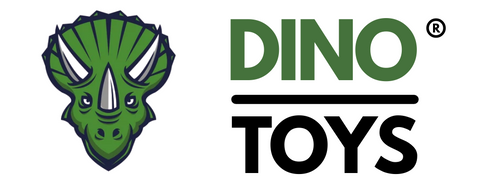
Comments will be approved before showing up.
